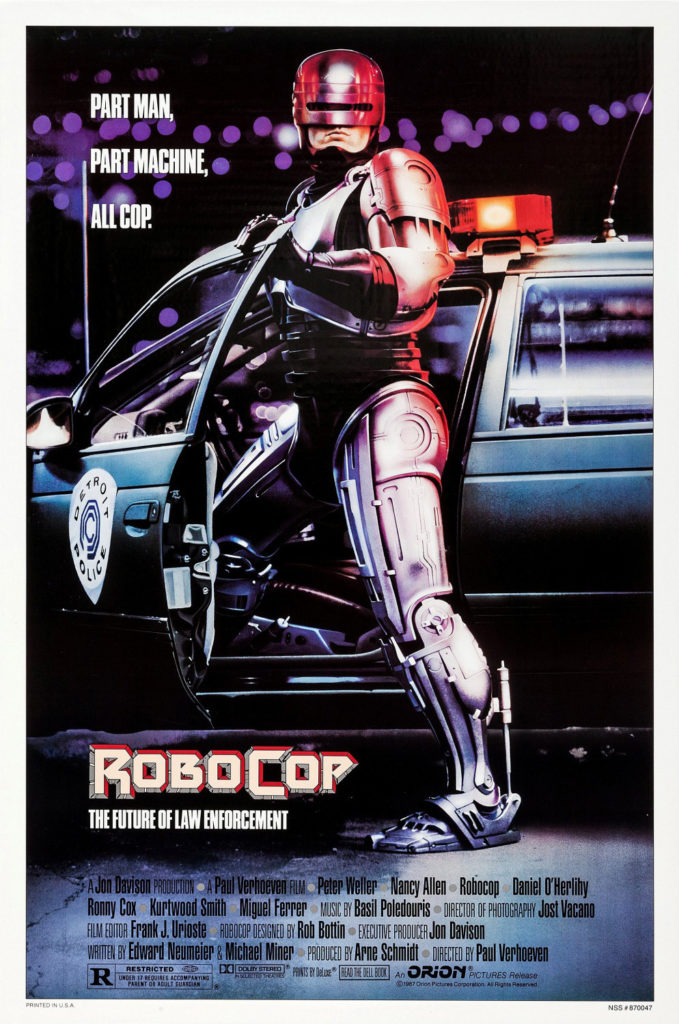3-D! About every generation or so 3-D makes a rousing return to cinema, but never seems to rise above gimmickry. Then, after a few years it recedes back into the mists, waiting to appear again, after the moviegoing public forgets how annoying it is to wear those damn glasses. The second wave of 3-D movies came to audiences in the early 1980s, when this film is from, and, like the first wave in the 1950s, the ’80s saw the technique’s most prominent use in horror films.
It’s no surprise that horror is the genre that would give something like 3-D a spin. After all, horror films are the descendants of carnival fun houses, where showmen would use every trick in the book to put a scare into the rubes. It’s also a perfect fit for a genre that features deadly weapons, severed limbs, and spurts of blood all flying about the screen. Anything that brings the action closer to the viewer is a good thing, right? Right?! Continue reading “Amityville 3-D”

 Dystopian future societies are the stuff dreams are made of. They are what grow from the seeds of our own decadence and shallowness. The moral bankruptcy, and sometimes outright horror, of the settings of films like Blade Runner, A Clockwork Orange, THX 1138, Escape from New York, and Soylent Green wouldn’t be possible if writers and directors didn’t look around them and see the lightning speed with which we throw ourselves into unknown futures, sometimes without regard for so many of the present realities which work so well and don’t need change. The ever-present message is that change, sometimes jarring change, is inevitable. Films that look to the future warily revolve around placing the viewer in the role of Rip Van Winkle. When the theater lights dim, the familiar world of today dissolves into the freak show of tomorrow. The overriding questions always being: Why are the people onscreen comfortable with this? Why doesn’t everybody see how wrong things are?
Dystopian future societies are the stuff dreams are made of. They are what grow from the seeds of our own decadence and shallowness. The moral bankruptcy, and sometimes outright horror, of the settings of films like Blade Runner, A Clockwork Orange, THX 1138, Escape from New York, and Soylent Green wouldn’t be possible if writers and directors didn’t look around them and see the lightning speed with which we throw ourselves into unknown futures, sometimes without regard for so many of the present realities which work so well and don’t need change. The ever-present message is that change, sometimes jarring change, is inevitable. Films that look to the future warily revolve around placing the viewer in the role of Rip Van Winkle. When the theater lights dim, the familiar world of today dissolves into the freak show of tomorrow. The overriding questions always being: Why are the people onscreen comfortable with this? Why doesn’t everybody see how wrong things are?